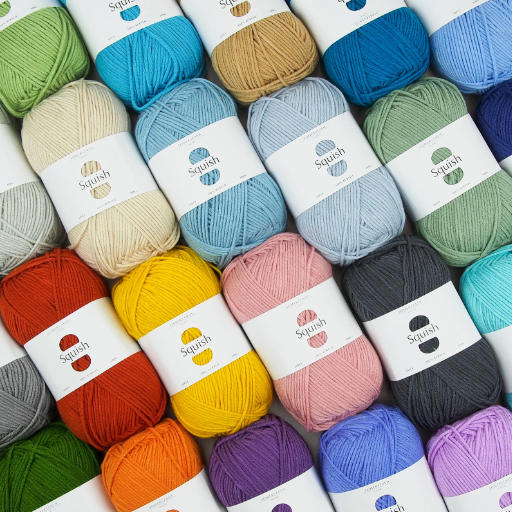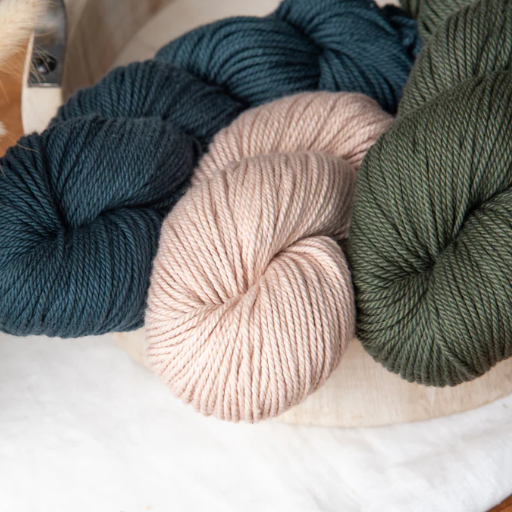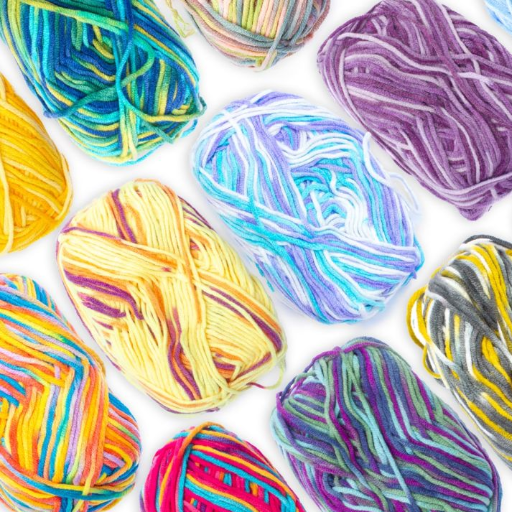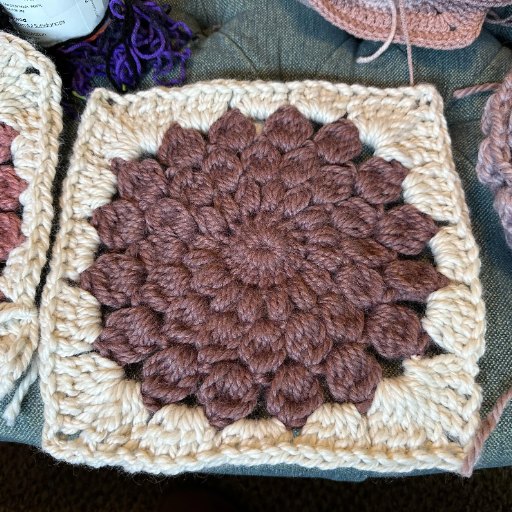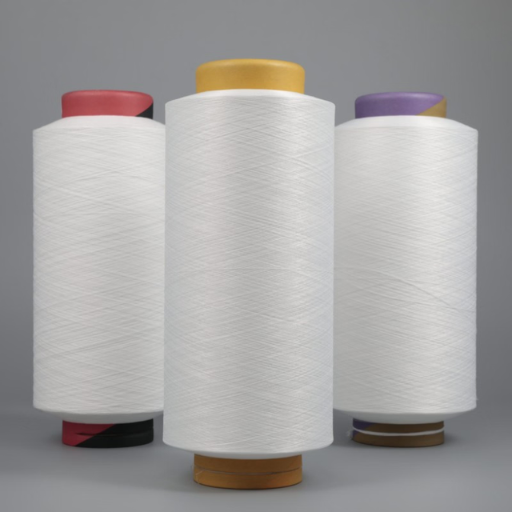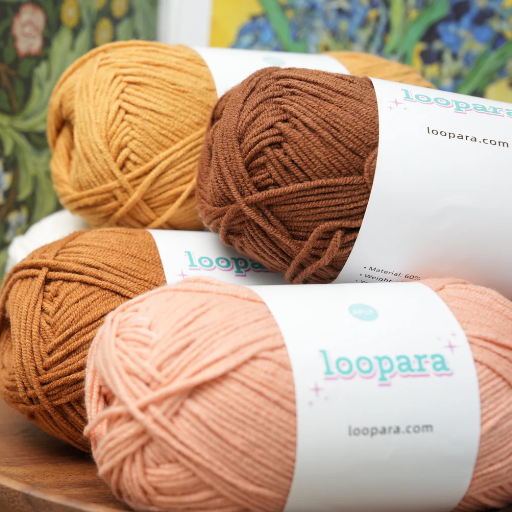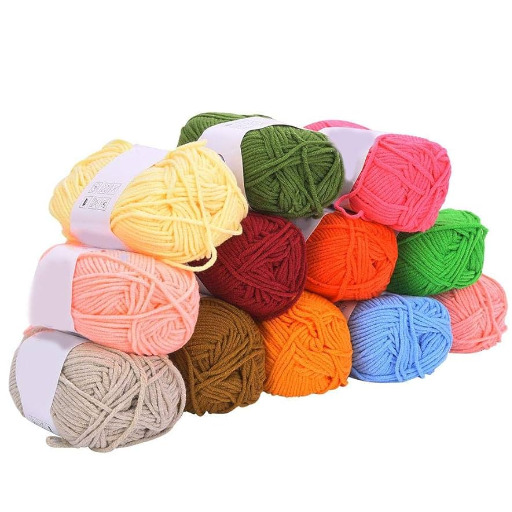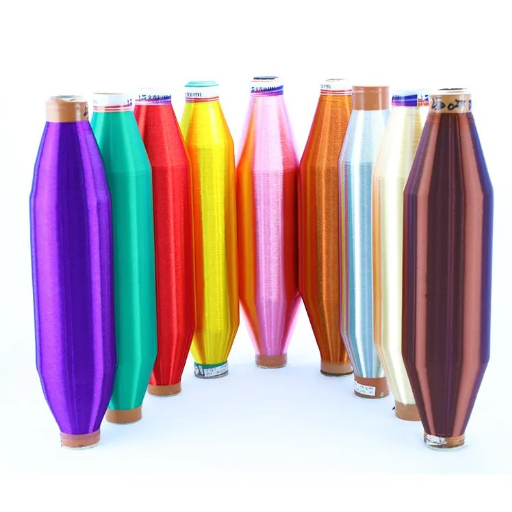When it comes to knitting or crocheting the perfect beanie or hat, selecting the right yarn is one of the most critical decisions you’ll make. The choice of yarn affects not only the functionality and durability of the finished piece but also its aesthetic, texture, and overall comfort. This guide will provide a comprehensive framework to help you choose the best yarn for your project. We’ll discuss important factors such as fiber types, weight classifications, and how different yarn properties impact your design and wearing experience. Additionally, we will cover practical considerations, including yarn care, stretch, and warmth. By the end of this article, you’ll have a clear understanding of how to match your project’s goals with the ideal yarn, setting the foundation for crafting a beanie or hat that’s both beautiful and practical.
What is the Right Yarn for Your Hat Project?

Choosing the perfect type of yarn for your hat project requires considering a few factors unique to what you are trying to accomplish. To begin, think about fiber type. Natural fibers such as wool provide warmth and elasticity which are perfect for cold hats, while cotton or bamboo would be more breathable for lightweight and summertime accessories. Weight classification is also important. Chunky yarns work for speedy, warm works with bold patterns, while finer yarns allow for more complex stitches and a lighter fit. Furthermore, check the yarn’s stretch and drape so it will match the hat design you want to achieve. Lastly, care instructions; machine washable fibers are better for more active use, whereas special materials may require more gentile handling. With these few considerations, you should be able to pick a yarn that perfectly complements both the style and function of your hat.
Understanding Different Yarn Types
The first thing I consider when choosing a yarn type is the fiber composition. For warmth and stretch, natural fibers like wool and alpaca are my go-to choices; however, I would choose cotton or bamboo if I need something lighter and more breathable. For the design and structure of my project, I think about the yarn weight—chunky yarns are best for quick, cozy hats, while finer yarns allow for detailed stitch work and more delicate finishes. The yarn’s feel and performance in the finished piece is another important factor, and I focus on the overall drape and stretch of the piece I’m creating. Even though I love luxurious fibers, I typically prioritize care instructions, and for durability, I normally reach for synthetic blends that are machine-washable, but I try to save the more high-maintenance fibers for special projects. Weighing all these factors ensures that I never have any doubt about the yarn I select for any hat I make.
Choosing the Correct Yarn Weight for Your Beanie
It is crucial to keep the correct yarn weight if you want to achieve great functionality and style for your beanie. Lighter, open details such as fingering or sportweight yarns are best suited for intricate stitch patterns and textures as well as lightweight designs that can be worn during transitional weather, or as indoor accessories. Worsted weight yarns have the best of both worlds, being sufficiently warm, durable, and offering moderate levels of warmth, making them ideal for a variety of beanie styles. For gently stirring and ease in crafting during bitterly cold days, bulky or super bulky weight yarns work best with beanie projects, as they are pleasant to touch and warm. Always consider the pattern recommendations along with the yawn weight and gauge to ensure a well-fitting and structured beanie.
How to Pick the Best Yarn for Crochet and Knit
Selecting the best yarn for your crochet or knitting project depends on several key factors including the intended use of the finished item, the pattern requirements, and your personal preferences. Start by considering the yarn’s fiber content. Natural fibers like wool and cotton are excellent for warmth and breathability, while synthetic fibers such as acrylic are durable, affordable, and easy to care for. Blended yarns often combine the best qualities of both natural and synthetic fibers.
Next, evaluate the yarn weight, as it directly affects the texture, drape, and size of your project. Follow the pattern recommendations for yarn weight to achieve the desired result—from lightweight lace for delicate items to bulky yarn for quick, cozy projects. Additionally, check the yarn label for important information such as gauge, yardage, and care instructions to ensure compatibility with your project needs.
For beginners, medium-weight (worsted) yarns in solid, lighter colors are ideal as they are easier to work with and show stitch definition clearly. Advanced crafters might prefer experimenting with specialty or hand-dyed yarns for unique textures and finishes. Finally, always purchase enough yarn from the same dye lot to maintain color consistency across your project.
How Does Fiber Choice Affect Your Beanies?

The selection of fiber will have a bearing on how your beanie will perform, how comfortable it will be, and even how it looks. For instance, natural fibers like wool are great for beanie neurons because they retain heat excellently, possess good elasticity, and can wick moisture, making them very suitable for beanies designed for cold weather. Cotton is breathable and lightweight making it ideal to be used in warmer regions or can be worn throughout the year. Some synthetics like acrylic are durable and soft, easy to care for, and budget-friendly, but they lack versatility. Certain blends also enhance specific traits like softness e.g. blending alpaca with nylon will boost toughness. All in all, the chosen fiber dictates how well the beanie will function, its durability, and attractiveness or aesthetic appeal.
Benefits of Cotton Yarn for Spring and Summer Hats
Because of its comfort and breathability, cotton yarn is a great choice for making spring and summer hats. Additionally, its moisture-absorbing capabilities help the wearer maintain a cool and dry body. Moreover, its lightweight and hypoallergenic properties make cotton ideal for sensitive skin. Lastly, its durability means that it can be used and washed frequently without loss of quality, allowing the hats to retain their shape and softness over time. Furthermore, unlike synthetic fibers, cotton offers cotton stitch definition which results in crisp and polished designs perfect for seasonal wear.
Is Acrylic Yarn a Good Choice for Warm Winter Hats?
Because it is inexpensive, available in many colors, and warm, acrylic yarn is ideal for winter hats. Its heat retention characteristics make it a fitting choice for cold climates since it keeps the wearer warm and comfortable. In addition, acrylic yarn is gentle as it is lightweight, making it comfortable to wear for a long time. Its softness means that many different forms and patterns can be created as well. Its strength and low maintenance as a winter accessory which is easy to wash and does not shrink further adds to the appeal. On the downside, it does not breathe well compared to natural fibers, and it is not as smooth and soft as wool, which could irritate someone with delicate skin. Even with these factors in mind, acrylic yarn is still the best option for making winter hats due to its effectiveness and versatility.
Exploring Wool Blends for Breathable Beanies
Wool blends are great when making breathable beanies because of the factors they offer when it comes to warmth and durability. Merino wool, for instance, can maintain natural temperatures which means it exits moisture, thus ensuring the wearer is comfortable in any weather. When mixed with other materials such as acrylic, nylon, or polyester, wool headwear becomes easy to maintain, does not shrink, and is more durable all while keeping the insulating properties. These blends are also soft and elastic which makes them perfect for warm lightweight beanies. Wool blends are much kinder to the budget and easier to care for as they are often machine washable. This capability, along with moisture control and sheer comfort, means wool blends are perfect for stylish and functional headwear that is breathable.
Why Acrylic Yarn Might Be the Best for Crochet Hats

The combination of these characteristics makes acrylic yarn an outstanding choice for crochet hats. Its affordability, versatility, and low-maintenance properties alone make it worth considering. Additionally, an acrylic crochet hat can be worn in different settings since it is lightweight and warm enough to provide comfort without the added bulk. Moreover, this material comes in a variety of vibrant colors which allows for creative and customized designs. Finally, for the wearers who prefer easy care, an acrylic crochet hat is machine washable. Thus, when all the elements are combined, acrylic yarn remains a practical choice for designing crochet hats.
Advantages of Using Acrylic Yarn for Crochet
- Affordability
Acrylic yarn is highly cost-effective, making it an ideal choice for both beginners and experienced crocheters. It allows for large projects to be completed without breaking the budget, especially when creating items like hats, scarves, or blankets.
- Durability
This yarn is known for its strength and resilience, making finished crochet items long-lasting and resistant to wear and tear. It does not shrink or lose shape easily, ensuring that projects maintain their original structure over time.
- Wide Variety of Colors and Textures
Acrylic yarn is available in an extensive range of vibrant colors, enabling crocheters to explore creative and customized designs. From soft pastels to bold hues, the variety is unmatched, and it also comes in different textures, such as smooth or boucle.
- Low Maintenance
Unlike natural fibers, acrylic yarn is easy to care for. Most acrylic crochet items are machine washable, quick to dry, and do not require special handling. This convenience is ideal for everyday use and gifts.
- Lightweight and Warm
Despite being lightweight, acrylic yarn offers sufficient warmth, making it perfect for crocheted items designed for colder weather. Additionally, it adds comfort without creating excess bulk in wearable projects like hats and sweaters.
- Allergy-Friendly Alternative
For individuals sensitive to wool or other natural fibers, acrylic yarn serves as an excellent hypoallergenic alternative while maintaining softness and functionality.
These advantages combine to make acrylic yarn a practical and widespread choice among crocheters, particularly for versatile, economical, and vibrant creations.
Comparing Acrylic Blend and Pure Acrylic Yarn
We need to analyze the blend and yarn performance about its use cases and composition, then we can make an Acyclic blend yarn vs pure acrylic yarn comparison. We need to blend yarn with wool, cotton, or polyester so that the yarn blends better. This helps in using wool and polyester which boosts breathability and durability. For example, a wool blend uses cotton and polyester which improves shape retention, comfort, and breathability. An acrylic wool blend on the other hand provides added warmth and elasticity as well.
Pure acrylic on the other hand stays as is for the polyester, and pure acrylic evaporates colors. It is good for fabricating projects that need machine washing and is free from pilling. It also shrinks or loses shape after washing, making a vast majority of projects easier. Nevertheless, As with any innovation, acrylic does have its disadvantages Polymer offcuts are not shaped and thus do not enhance soft, expanded thermal properties, or any range of other benefits that natural fibers can provide.
In the end, picking between acrylic blend yarn and pure acrylic yarn depends on the qualities to be achieved for the project being undertaken. Pure acrylic is great for durability and easy care. Specialized tactile experience and functionality projects do benefit from acrylic blends. Either way, the options provide a lot of creativity for knitters and crocheters.
How to Choose the Right Yarn for Hat Patterns

When choosing the right yarn for hat patterns, several factors must be considered to ensure the desired outcome for your project:
- Fiber Composition: If durability and low maintenance are priorities, pure acrylic yarn is an excellent option. For added softness, elasticity, and warmth, consider an acrylic blend that incorporates natural fibers like wool.
- Weight of Yarn: The yarn weight directly affects the thickness and warmth of the hat. Lightweight yarns, like DK or sport weight, are ideal for lighter, snug-fitting hats, while heavier yarns, such as worsted or bulky, offer greater insulation for cold-weather wear.
- Texture: Smooth yarns are easier to work with and showcase intricate stitch patterns. Textured yarns, like boucle or chenille, can add a unique aesthetic but may require more advanced handling skills.
- Care Requirements: For hats that will see extensive use, machine-washable and shrink-resistant yarns, like pure acrylic, are highly practical. Blended yarns may require special care but provide additional comfort and luxury.
Carefully assess these elements in the context of your specific project and intended use for the hat to select the most suitable yarn type. Both pure acrylic and acrylic blend options offer reliable versatility and creativity.
Matching Yarn Weight to Hat Pattern Requirements
Selecting the correct yarn weight is pivotal to achieving the desired fit, drape, and warmth of a hat. Hat patterns typically specify the required yarn weight, which ensures the finished dimensions match the intended design. Below is a concise guide to understanding how yarn weight impacts pattern requirements:
- Lightweight Yarn (Fingering, Sport, DK)
These weights are well-suited for spring or fall hats where lighter insulation is desired. They are ideal for intricate stitch patterns or projects requiring a finer texture, offering a snug fit and defined detailing.
- Medium Weight Yarn (Worsted, Aran)
Commonly used in hat patterns, medium weight yarns provide a balanced combination of warmth and structure. They are versatile, easy to work with, and can accommodate a variety of designs from simple beanies to more textured patterns.
- Heavy Weight Yarn (Bulky, Super Bulky)
These yarns are perfect for winter hats due to their excellent insulation and cozy feel. They allow for quick project completion and create thick, cushioned fabrics, although they may lack the precision in finer stitchwork.
Ensure that the yarn’s weight aligns with the specified gauge in the pattern by testing it with a swatch. Consider the season, the hat’s purpose, and the wearer’s comfort when making your selection.
Considering the Type of Hat You’re Making
The type of hat you plan to create significantly influences your choice of yarn and design. For lightweight, breathable hats like slouchy beanies or summer caps, cotton or bamboo yarns are ideal due to their softness and cool feel. If you’re crafting a functional, winter-ready hat, wool or acrylic yarns provide warmth, durability, and moisture-wicking properties. For berets or decorative hats, consider blending fibers for a balance of structure and drape. Always prioritize a yarn type that complements the hat’s intended use, considering factors such as elasticity for snugness, texture for aesthetic detail, and weight for seasonal appropriateness.
What Are the Best Yarns for Crochet Hats?

When selecting the best yarns for crochet hats, consider the following key options:
- Wool – Excellent for winter hats, wool is warm, durable, and moisture-wicking. Its natural stretch ensures a snug fit, making it ideal for beanies and earflap hats.
- Acrylic – A cost-effective, versatile option, acrylic yarn is lightweight, durable, and available in a wide range of colors. It works well for both everyday casual hats and cold-weather designs.
- Cotton – Best suited for summer and lightweight hats, cotton yarn is breathable, soft, and hypoallergenic, providing comfort in warmer climates or for sensitive skin.
- Bamboo Blends – These offer a silky texture and excellent drape, perfect for stylish, lightweight hats with a touch of elegance.
- Blended Yarns – Combining fibers like wool and acrylic or cotton and polyester allows for a balance of qualities such as warmth, softness, and durability, catering to specific functional or aesthetic needs.
Always choose a yarn that matches the project’s requirements, ensuring optimal comfort, longevity, and style for the wearer.
Top Yarn Choices for Different Hat Patterns
When selecting yarn for specific hat patterns, understanding the requirements of the design and intended use is crucial. Below is a breakdown of optimal yarn choices for popular hat styles:
- Basic Beanies – Wool and blended yarns, such as wool-acrylic mixes, are excellent for warmth, durability, and elasticity, making them perfect for classic beanies suited for everyday wear.
- Slouchy Hats – Bamboo blends or lightweight acrylics are ideal due to their ability to provide excellent drape and shape retention while maintaining a sleek, modern look.
- Cable Knit Hats – Wool yarn, especially merino wool, is highly recommended for showcasing intricate cabling because of its excellent stitch definition and elasticity.
- Summer Hats – Cotton or cotton-linen blends are breathable and hypoallergenic, making them ideal for warm weather while ensuring comfort and durability.
- Textured or Patterned Hats – Blended yarns like wool-cotton or premium acrylics are versatile, allowing textures and patterns to stand out while balancing softness and structural integrity.
By aligning your yarn choice with your specific hat design, you can achieve an optimal balance of aesthetics, functionality, and comfort. Always consider fiber composition, weight, and compatibility with the pattern for the best results.
Finding the Best Yarn for Beanies and Summer Hats
Yarn selection for summer hats and beanies requires one to consider the level of comfort, breathability, and durability offered by the material. For beanies meant for cold weather, wool or wool blends are highly recommended for their insulation and stretchability. Merino wool offers bulk, so it is particularly soft and warm. Summer hats, however, need lightweight and breathable yarns such as cotton or bamboo. Cotton yarn is moisture-absorbing, durable, breathable, and ideal for warm weather. Bamboo yarn adds a softer touch, while also having great breathability and natural luster. Remember to consider yarn weight too; lighter weights, such as worsted or DK work best for summer projects, while heavier weights are best for winter beanies. Always consider the type of yarn the intended use of the project and the level of comfort that the final result needs to provide.
References
Frequently Asked Questions (FAQ)
Q: How do I choose the best yarn for hats?
A: To choose the best yarn for hats, consider the weight of the yarn, the type of yarn fibers, and the season for which you’re making the hat. For instance, superwash wool or merino wool is ideal for warmth, while cotton blends are better for breathable, lighter hats.
Q: What weight yarn is recommended for making a hat?
A: Worsted weight yarn is commonly recommended for hats as it provides a good balance of warmth and flexibility. However, for chunkier or thicker yarn hats, you might want to use bulky or chunky yarns for added warmth.
Q: What type of yarn is best for baby hats?
A: Soft yarns such as merino wool or quality acrylic yarn are best for baby hats. They provide the necessary warmth without being itchy and are often machine washable, making them practical for frequent use.
Q: Should I use wool yarn for a hat?
A: Wool yarn, such as sheep wool or merino wool, is excellent for making warm and durable hats. However, some people find wool itchy, so it’s important to consider the wearer’s skin sensitivity. Superwash wool is a great alternative as it offers the warmth of wool without the itchiness.
Q: Can I use acrylic yarn to crochet a hat?
A: Yes, acrylic yarns come in a variety of colors and are a popular choice for hats due to their affordability and durability. They are also machine washable and provide good warmth, making them suitable for hats for all seasons.
Q: How does yarn fiber affect the choice of yarn for a hat?
A: Yarn fibers determine the texture, warmth, and care requirements of the hat. Alpaca yarn is softer and warmer, making it ideal for winter hats, while cotton blends are more breathable and suitable for summer hats. The yarn you choose should align with the intended use and care preferences.
Q: Are there specific yarn brands that work well for hats?
A: Lion Brand Wool Ease is a popular choice for knitting and crocheting hats due to its blend of warmth and easy care. It combines wool and acrylic, offering both softness and durability.
Q: What should I take into consideration when picking the right yarn for a crochet hat?
A: When picking the right yarn for a crochet hat, consider the yarn’s weight, fiber content, and care instructions, as well as the pattern you’re following. Free crochet patterns often specify the type of yarn you should use to achieve the best results.
Q: How does the thickness of the yarn impact the hat’s design?
A: The thickness of the yarn affects the hat’s warmth and structure. Thicker yarn will make a warm, cozy hat ideal for winter, while thinner yarn is better for lighter hats. Brimmed hats need a yarn that provides enough structure to hold their shape.








